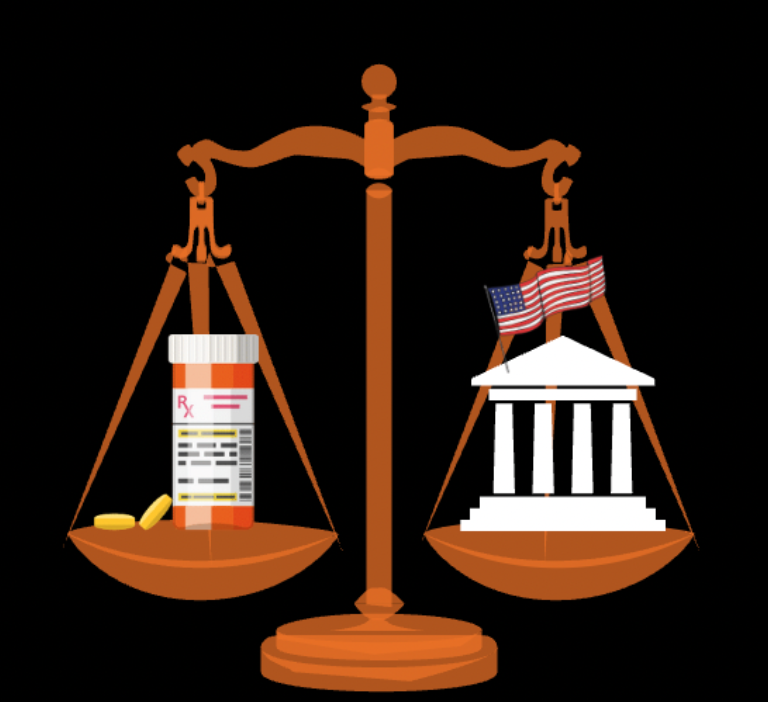The Adderall shortage: Caused by government and corporate irresponsibility
In October 2022, more than two months after difficulties filling prescriptions spread across the nation, the FDA announced a nationwide shortage of Adderall and other ADHD stimulants. After six months, the shortage continues to devastate people with the disorder. While the cause remains foggy, known facts paint a picture of government and corporate irresponsibility.
Adderall was approved in 2002 by the FDA, but it was not the first drug to cope with ADHD. Ritalin, a less potent stimulant, was approved in 1955. Despite this, Adderall has come to dominate the market with both generic and brand versions. Even though the drug shortage includes other stimulants according to ASHP, the shortage of Adderall is the most impactful, especially since Teva, the biggest manufacturer of Adderall in the USA, produced a whopping 96 million tablets in 2021 alone.
Issues began to present themselves during the COVID-19 pandemic, when telehealth restrictions were eased drastically by 22 states and prescriptions skyrocketed, especially among young women. Teva and other pharmaceutical companies claim that this is a key reason for the shortage, asserting the pandemic severely strained supply chains with unforeseen demand. But pharmaceutical companies haven’t changed production, even though the shortage has dragged on for a year.
Teva is anticipating an increase in revenue, according to its Q1 annual outlook, meaning the demand for Adderall is clearly benefiting the company. This is especially important for a company whose revenue plummeted from $23 billion to $16 billion between 2017 and 2019 and never recovered. Teva’s profit margins have squeezed compared to this time last year, but it’s difficult to attribute this to an increase in manufacturing costs, as these costs are not made available in its quarterly report. Additionally, many companies have buckled their belts with inflation and rising interest rates.
The most important factor to the shortage, and what proves government irresponsibility, is the regulation of the active ingredients for Adderall. The DEA views Adderall as a Schedule II drug because it contains Amphetamine, the same as Fentanyl. This means the active ingredients of Adderall are heavily regulated by the DEA and FDA, with set amounts allocated each month. It is here that companies and the government have decided to play the blame game; manufacturers attribute the shortage to this, claiming production is overly regulated, while the DEA says the companies haven’t depleted their stockpiles. Any resolution has been moving sluggishly for six months because, just to top it off, pharmaceutical companies don’t have to disclose reasons for a shortage — they aren’t legally required to do so.
Even though the shortage is severely impacting millions of Americans, action is stagnant. Ramping up manufacturing, which hasn’t yet been widely adopted, is problematic since most manufacturing was operating at near-peak capacity and is now under even more stress. Compounding this, the DEA refuses to budge on its production limitations, and, perhaps most importantly, isn’t reducing misuse or abuse.
The NIH estimates potentially 20% of college students have misused prescription drugs for academic gain, Adderall being the most popular, and a massive portion of this use is by students without ADHD, which has put further strain on supply and the DEA chemicals quote for stimulants. According to researchers at the University of Rhode Island and Brown University, taking Adderall does not even benefit academic performance for students without ADHD; millions take it despite being fooled by a placebo pill. Exacerbating this issue, what little impact federal regulation has had, like placing Adderall in Schedule II, has been undermined by a rise in illicit Adderall use, especially in college. What this federal scrutiny has caused, though, is more difficulty for real patients to obtain the stimulant.
While bleak comparisons are made to the opioid epidemic and corporations fail to improve on safe distribution and prescription of drugs, the government stands stagnant. A shortage of this proportion was inevitable with the web of irresponsibility from the FDA and DEA. Companies are tied up in manufacturing difficulty, federal regulation and pointing fingers, all the while impacting roughly 14 million Americans who are just trying to get through daily life.
The Adderall shortage is an incredibly important issue but often overlooked, as proven by the lack of attention given to preventing future shortages and shockingly few resources dedicated to the current crisis. Rather than solving the manufacturing issues constraining Teva and other manufacturers, the Biden administration has simply increased telehealth restrictions, and by doing so, shut out thousands of Americans from proper care for ADHD.
If the DEA reduced Adderall manufacturing restrictions and focused on distribution instead, there could be more supply chain transparency, and companies could be legally obligated to give reasons for a shortage. Any of these solutions are likely to work better than just addressing the issue by keeping medicine from people. The US government must confront federal and corporate irresponsibility and the immature finger-pointing involved before it becomes a dysfunctional bureaucratic mess that further harms innocent people.
Your donation will support the student journalists of Calabasas High School. Your contribution will allow us to purchase equipment and cover our annual website hosting costs.

Hi! My name is Sedona Kaye, and I’m the Perspectives Editor this year. I learned so much as a staff writer last year and can’t wait to learn more....











